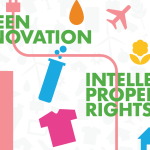
The digital age has revolutionized the way we create, distribute, and consume intellectual property
From music and movies to software and written content, the ease of digital reproduction and distribution has presented both opportunities and challenges for protecting intellectual property rights. This article delves into the unique challenges posed by the digital age and explores innovative solutions to safeguard intellectual property in this rapidly evolving landscape
1. Digital Piracy and Copyright Infringement:
The rise of the internet and digital technologies has fueled the proliferation of digital piracy and copyright infringement. This section discusses the challenges posed by online platforms that enable unauthorized sharing and distribution of copyrighted works. It highlights the need for robust copyright laws and enforcement mechanisms to combat piracy, along with the importance of public awareness and education regarding the ethical implications of consuming pirated content.
2. Digital Rights Management (DRM) and Technological Solutions:
To protect intellectual property in the digital age, content creators and rights holders have turned to digital rights management (DRM) systems. This section explores various DRM technologies and solutions that aim to restrict unauthorized access, copying, and distribution of digital content. It discusses the benefits and limitations of DRM and emphasizes the importance of striking a balance between protection and user experience to ensure consumer acceptance.
3. Blockchain Technology and Smart Contracts:
Blockchain technology, with its decentralized and immutable nature, offers promising solutions for intellectual property protection in the digital age. This section explains how blockchain can be utilized to establish transparent and tamper-proof records of ownership, licensing, and usage rights. It explores the concept of smart contracts that can automate IP transactions, ensuring fair compensation for creators and enabling traceability throughout the digital supply chain.
4. Open Source and Creative Commons Licensing:
The digital age has also given rise to alternative licensing models that promote collaboration and sharing while protecting intellectual property rights. This section explores the concepts of open-source software and Creative Commons licensing, which allow creators to grant permissions for others to use, modify, and distribute their works under certain conditions. It highlights the benefits of such licensing models in fostering innovation and expanding access to knowledge and creativity.
5. International Cooperation and Legal Frameworks:
Protecting intellectual property in the digital age requires international cooperation and harmonization of legal frameworks. This section discusses the challenges faced by multinational corporations and content creators in navigating diverse intellectual property laws across jurisdictions. It emphasizes the need for international treaties and agreements to establish consistent standards for IP protection, enforcement, and cross-border collaboration.
6. Education and Ethical Considerations:
Promoting a culture of respect for intellectual property rights begins with education and raising awareness about the value and impact of creative works. This section explores the importance of educating individuals, especially the younger generation, about the ethical implications of unauthorized copying, sharing, and infringement of intellectual property. It also emphasizes the role of digital literacy in enabling responsible consumption and fair compensation for creators.
Conclusion:
The digital age has brought unprecedented challenges to the protection of intellectual property rights. However, innovative solutions and evolving legal frameworks provide avenues for safeguarding intellectual property in this dynamic landscape. By addressing issues such as digital piracy, leveraging DRM technologies, exploring blockchain solutions, embracing alternative licensing models, fostering international cooperation, and promoting education and ethics, stakeholders can collectively strive towards a balanced and sustainable approach to protecting intellectual property in the digital age.

